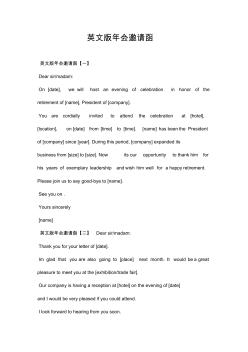Contents
part one Foundations
chapter one Models and Concepts of Life and Intelligence 3
The Mechanics of Life and Thought 4
Stochastic Adaptation: Is Anything Ever Really Random"para" label-module="para">
The “Two Great Stochastic Systems” 12
The Game of Life: Emergence in Complex Systems 16
The Game of Life 17
Emergence 18
Cellular Automata and the Edge of Chaos 20
Artificial Life in Computer Programs 26
Intelligence: Good Minds in People and Machines 30
Intelligence in People: The Boring Criterion 30
Intelligence in Machines: The Turing Criterion 32
chapter two Symbols, Connections, and Optimization by Trial and Error 35
Symbols in Trees and Networks 36
Problem Solving and Optimization 48
A Super-Simple Optimization Problem 49
Three Spaces of Optimization 51
Fitness Landscapes 52
High-Dimensional Cognitive Space and Word Meanings 55
Two Factors of Complexity: NK Landscapes 60
Combinatorial Optimization 64
Binary Optimization 67
Random and Greedy Searches 71
Hill Climbing 72
Simulated Annealing 73
Binary and Gray Coding 74
Step Sizes and Granularity 75
Optimizing with Real Numbers 77
Summary 78
chapter three On Our Nonexistence as Entities: The Social Organism 81
Views of Evolution 82
Gaia: The Living Earth 83
Differential Selection 86
Our Microscopic Masters"para" label-module="para">
Looking for the Right Zoom Angle 92
Flocks, Herds, Schools, and Swarms: Social Behavior as Optimization 94
Accomplishments of the Social Insects 98
Optimizing with Simulated Ants: Computational Swarm Intelligence 105
Staying Together but Not Colliding: Flocks, Herds, and Schools 109
Robot Societies 115
Shallow Understanding 125
Agency 129
Summary 131
chapter four Evolutionary Computation Theory and Paradigms 133
Introduction 134
Evolutionary Computation History 134
The Four Areas of Evolutionary Computation 135
Genetic Algorithms 135
Evolutionary Programming 139
Evolution Strategies 140
Genetic Programming 141
Toward Unification 141
Evolutionary Computation Overview 142
EC Paradigm Attributes 142
Implementation 143
Genetic Algorithms 146
An Overview 146
A Simple GA Example Problem 147
A Review of GA Operations 152
Schemata and the Schema Theorem 159
Final Comments on Genetic Algorithms 163
Evolutionary Programming 164
The Evolutionary Programming Procedure 165
Finite State Machine Evolution 166
Function Optimization 169
Final Comments 171
Evolution Strategies 172
Mutation 172
Recombination 174
Selection 175
Genetic Programming 179
Summary 185
chapter five Humans—Actual, Imagined, and Implied 187
Studying Minds 188
The Fall of the Behaviorist Empire 193
The Cognitive Revolution 195
Bandura’s Social Learning Paradigm 197
Social Psychology 199
Lewin’s Field Theory 200
Norms, Conformity, and Social Influence 202
Sociocognition 205
Simulating Social Influence 206
Paradigm Shifts in Cognitive Science 210
The Evolution of Cooperation 214
Explanatory Coherence 216
Networks in Groups 218
Culture in Theory and Practice 220
Coordination Games 223
The El Farol Problem 226
Sugarscape 229
Tesfatsion’s ACE 232
Picker’s Competing-Norms Model 233
Latané’s Dynamic Social Impact Theory 235
Boyd and Richerson’s Evolutionary Culture Model 240
Memetics 245
Memetic Algorithms 248
Cultural Algorithms 253
Convergence of Basic and Applied Research 254
Culture—and Life without It 255
Summary 258
chapter six Thinking Is Social 261
Introduction 262
Adaptation on Three Levels 263
The Adaptive Culture Model 263
Axelrod’s Culture Model 265
Experiment One: Similarity in Axelrod’s Model 267
Experiment Two: Optimization of an Arbitrary Function 268
Experiment Three: A Slightly Harder and More Interesting Function 269
Experiment Four: A Hard Function 271
Experiment Five: Parallel Constraint Satisfaction 273
Experiment Six: Symbol Processing 279
Discussion 282
Summary 284
part two The Particle Swarm and Collective Intelligence
chapter seven The Particle Swarm 287
Sociocognitive Underpinnings: Evaluate, Compare, and Imitate 288
Evaluate 288
Compare 288
Imitate 289
A Model of Binary Decision 289
Testing the Binary Algorithm with the De Jong Test Suite 297
No Free Lunch 299
Multimodality 302
Minds as Parallel Constraint Satisfaction Networks in Cultures 307
The Particle Swarm in Continuous Numbers 309
The Particle Swarm in Real-Number Space 309
Pseudocode for Particle Swarm Optimization in Continuous Numbers 313
Implementation Issues 314
An Example: Particle Swarm Optimization of Neural Net Weights 314
A Real-World Application 318
The Hybrid Particle Swarm 319
Science as Collaborative Search 320
Emergent Culture, Immergent Intelligence 323
Summary 324
chapter eight Variations and Comparisons 327
Variations of the Particle Swarm Paradigm 328
Parameter Selection 328
Controlling the Explosion 337
Particle Interactions 342
Neighborhood Topology 343
Substituting Cluster Centers for Previous Bests 347
Adding Selection to Particle Swarms 353
Comparing Inertia Weights and Constriction Factors 354
Asymmetric Initialization 357
Some Thoughts on Variations 359
Are Particle Swarms Really a Kind of Evolutionary Algorithm"para" label-module="para">
Evolution beyond Darwin 362
Selection and Self-Organization 363
Ergodicity: Where Can It Get from Here"para" label-module="para">
Convergence of Evolutionary Computation and Particle Swarms 367
Summary 368
chapter nine Applications 369
Evolving Neural Networks with Particle Swarms 370
Review of Previous Work 370
Advantages and Disadvantages of Previous Approaches 374
The Particle Swarm Optimization Implementation Used Here 376
Implementing Neural Network Evolution 377
An Example Application 379
Conclusions 381
Human Tremor Analysis 382
Data Acquisition Using Actigraphy 383
Data Preprocessing 385
Analysis with Particle Swarm Optimization 386
Summary 389
Other Applications 389
Computer Numerically Controlled Milling Optimization 389
Ingredient Mix Optimization 391
Reactive Power and Voltage Control 391
Battery Pack State-of-Charge Estimation 391
Summary 392
chapter ten Implications and Speculations 393
Introduction 394
Assertions 395
Up from Social Learning: Bandura 398
Information and Motivation 399
Vicarious versus Direct Experience 399
The Spread of Influence 400
Machine Adaptation 401
Learning or Adaptation"para" label-module="para">
Cellular Automata 403
Down from Culture 405
Soft Computing 408
Interaction within Small Groups: Group Polarization 409
Informational and Normative Social Influence 411
Self-Esteem 412
Self-Attribution and Social Illusion 414
Summary 419
chapter eleven And in Conclusion . . . 421
Appendix A Statistics for Swarmers 429
Appendix B Genetic Algorithm Implementation 451
Glossary 457
References 475
Index 4972100433B

 英文版外贸合同(中英文对照版)
英文版外贸合同(中英文对照版)

 英文版会邀请函
英文版会邀请函